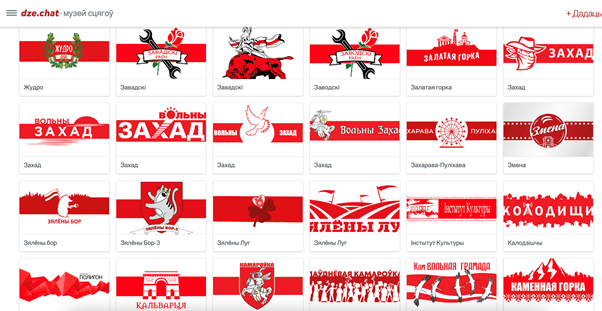As I am explaining the peculiarities of the Belarusian protests to my friends or updating them on the latest developments, it is impossible not to mention the role Telegram plays in this story; yet, it seems like, for the majority of my European friends, Telegram remains just that messaging app they heard something about, but are not quite sure what it is.
Telegram, the unknown beast
I have a spiel prepared the moment I have to explain what exactly Telegram is. I explain that Telegram is a messenger app, but not exactly; you can have group chats, like in WhatsApp. And you can have channels, something similar to Twitter. You can follow the news pages, and comment on them, like on Facebook. You can also text anyone by just knowing their handle, like on Facebook Messenger. I soon realise that I make it sound like a Frankenstein’s monster, but a monster that played a crucial role in the Belarusian protest movement.
These days, Telegram is increasingly popular in post-Soviet countries. There is a good reason why some choose to use Telegram, especially when they don’t want their messages to fall into the government’s hands: the history of the app goes back to its creator, Pavel Durov, looking for a safe messaging platform when he was followed by the Russian FSB (Federal Security Service, the successor of the KGB). Before that, Pavel was the creator of the VK, a social network, and was forced to give the Russian authorities access to users’ information.
Telegram in Belarusian protests
Telegram was a relatively popular app even before the protests, but it showed its true potential only in 2020. Lukashenka, who stayed in power for 26 years, might not have seen any signs of trouble coming, as the time neared the election day on August 9. Same as with the previous elections, the victory seemed to have been guaranteed; the opponents were divided and some already imprisoned. Nonetheless, the discontent with the old regime was there. The protests against the election results broke out just as the polling stations closed, and Telegram played a vital role in the way the events unfolded for multiple reasons.
Three days that changed Belarus
The events of August 9 through August 11 shook the country. The images of the people, protesting against the falsification of the elections, and the special forces’ violence against them were seen in most of the news agendas across the world. Not the Belarusian state channels, however, who remained silent about the events and were happy to report another elegant victory of the incumbent with 80% in favour. In the informational vacuum, many turned to the Telegram news channels, hoping to read more on what was happening in the country.
Recognising the threat coming from the alternative news, the Belarusian government attempted to stop their spread. Just as the polling stations closed on August 9, the Belarusian government completely shut down the internet in the entire country for three days. Some were able to get some internet connection through the VPN, but the majority remained without any internet access during this time. A similar strategy has been employed every Sunday ever since, perhaps in hopes of disorganising the active demonstrations and slowing down the spread of the information on the ground.
Despite all government attempts, the forbidden fruit is the sweetest. With the government attempting to limit the internet access, it became even more apparent for the majority on where to seek the information. Telegram became a popular choice for getting the news, as the TV channels remain exclusively pro-governmental, while all alternative news websites have their own Telegram channels. The design of the Telegram itself was favourable for such news delivery, as it allowed for easy access to the articles and enables the comments straight on the platform.
As a result, even those who were not yet converted became proficient Telegram users. The subscriber numbers of the news channels grew dramatically, while many neighbourhood chats were created to organise the protests locally. Telegram channel NEXTA live, which was posting the live information on the protests, grew from 300k to two million in the three days following the elections, becoming one of the largest channels on Telegram and a crucial source of information for the protesters. The creator of the channel, a 22-year-old Stepan Putilo, was even declared a terrorist by the Belarusian government.
Neighbourhood Chats
Neighbourhood group chats on Telegram became a distinct phenomenon during the Belarusian protests. Villages, city districts, and sometimes individual houses — locally organised chats started appearing on the newly created telegram map, uniting neighbours and fostering cooperation. Some neighbourhoods became well-known across the country for their initiatives and underground concerts, and many were able to gather in local protests, making the task of suppressing the demonstrations ever more difficult for the police.
The state officials tried fighting Telegram in multiple ways, with varying degrees of success. At some stage, the state TV news broadcast was talking down on “local gangs” organising themselves through Telegram group chats. The result? Even more people discovered the phenomenon and actively sought to find and join such neighbourhood chats.
~ “The museum of banners” – dze.chat compiled a collection of all neighbourhood banners.
Attempting to crack down on Telegram
In an attempt to crack down the protesting activity on Telegram, the Belarusian government started a witch-hunt against the subscribers to the alternative news channels and participants of the neighbourhood chats. Unable to read the private conversations due to the Telegram’s core policy, their close attention turned on the administrators of group chats and channels, as such information was initially displayed publicly under the users’ profiles.
Such instance is not the only case of the Telegram’s functionality changing in response to the newly discovered shortcomings. As the government was actively hunting down the administrators of group chats, there was a swift change in the app functionality to allow the administrators to post on their groups anonymously. As more people were using Telegram as their primary news source, the app introduced a commenting function to the channel posts as well.
Since the beginning, Telegram became integral to the Belarusian protests. More and more people are using it to organise themselves, get their news updates and share the information on the protest. And Telegram itself is not shy about their political alignment: after all, if you try posting the Belarusian official red-green flag, it will be automatically replaced with the white-red-white, which is used by the protesters.
Read More


Watch Our Episodes






